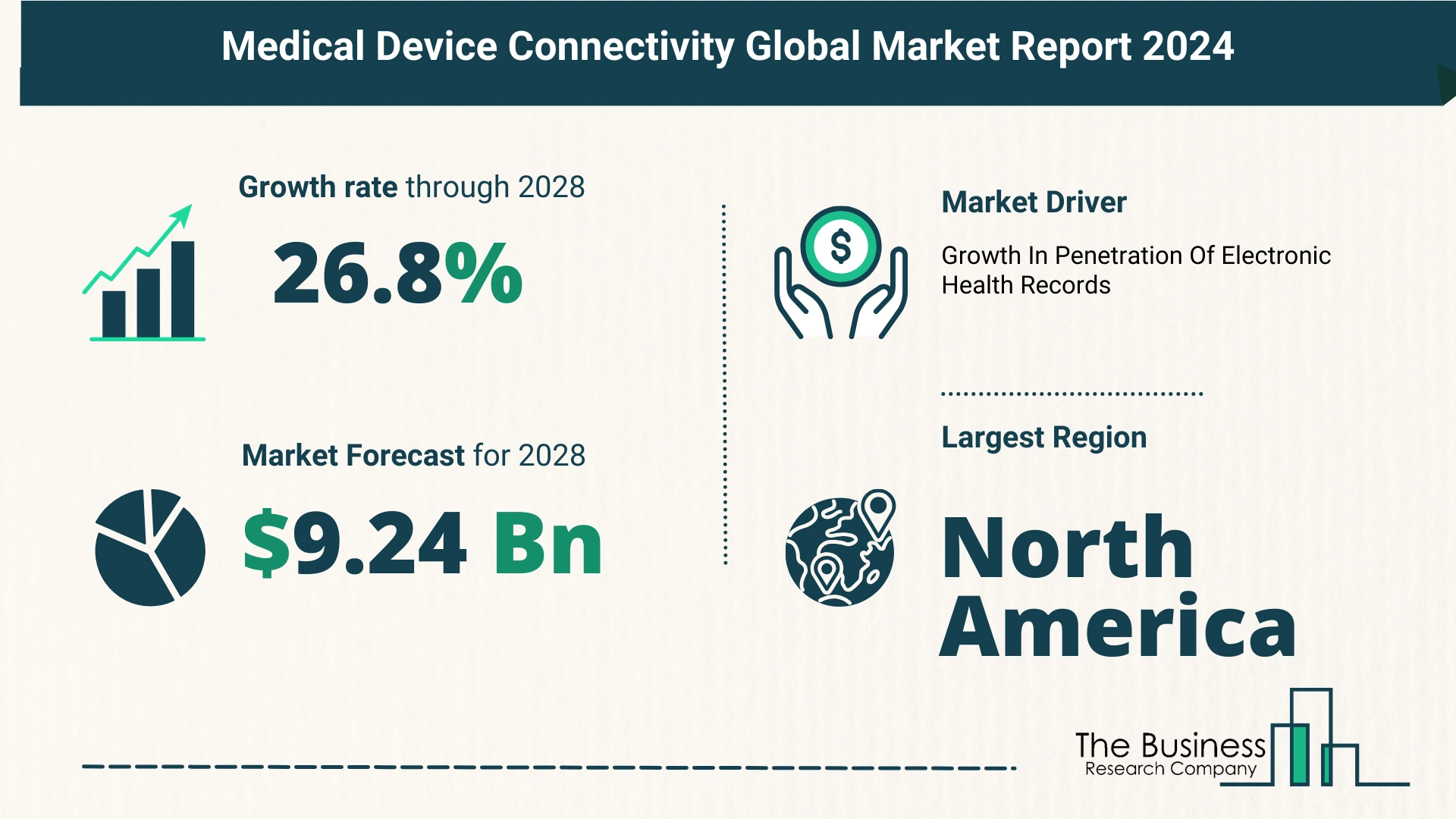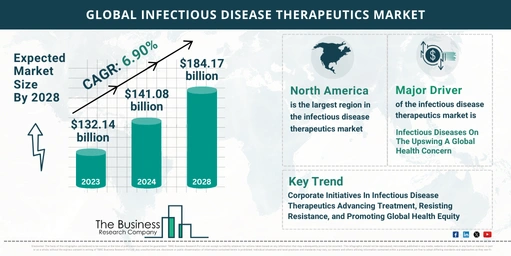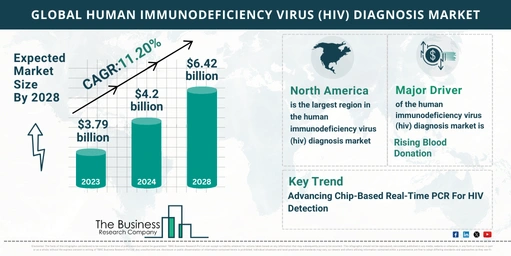Medical Device Connectivity Market Forecast Until 2033 – Estimated Market Size And Growth Rate
The Business Research Company’s market reports offer an in-depth analysis on the market’s growth potential, major drivers, key trends and more.
The medical device connectivity market has witnessed remarkable expansion, escalating from $2.83 billion in 2023 to a projected $3.58 billion in 2024, marking a substantial compound annual growth rate (CAGR) of 26.3%. Several factors contribute to this surge:
- Rise in chronic diseases
- Demand for streamlined healthcare operations
- Growing telehealth services
- Increased demand for remote patient monitoring
- Emphasis on data analytics and predictive insights
Anticipated Surge Ahead
Projections indicate a continued upward trend, with the market expected to soar to $9.24 billion by 2028, boasting a CAGR of 26.8%. Key drivers for this anticipated growth include:
- Increasing demands for seamless integration
- Accelerated digitization of healthcare
- Aging population
- Adoption of electronic health records
- Escalating healthcare expenses
Read More On The Medical Device Connectivity Market Report 2024 – https://www.thebusinessresearchcompany.com/report/medical-device-connectivity-global-market-report
Trends Shaping the Future
In the forecast period, several trends are poised to shape the landscape of medical device connectivity:
- IoT-enabled devices
- Electronic health records (EHR) systems
- Real-time patient data
- Patient engagement initiatives
- Remote diagnostics
- Telemonitoring solutions
Growing Penetration of Electronic Health Records (EHR)
The integration of medical devices with EHR systems is expected to be a significant growth driver. This integration facilitates seamless data exchange, enhancing clinical decision-making and care coordination:
- Real-time integration of patient monitoring data
- Enhanced access to comprehensive patient information
- Improved clinical decision-making
- Streamlined care coordination
Technological Advancements Driving Innovation
Major companies in the medical device connectivity market are leveraging advanced technologies to propel innovation:
- LocationAI for enhanced medical imaging and treatment planning
- Machine learning-powered location engines for precise tracking
- Integration of advanced solutions into existing systems
Oracle’s Strategic Acquisition
In June 2022, Oracle Corporation completed the acquisition of Cerner Corporation, aiming to revolutionize healthcare information systems:
- Enhancing treatment decisions
- Improving patient outcomes
- Reducing administrative workloads
- Lowering healthcare costs
Market Segmentation
The medical device connectivity market is segmented based on various factors:
- By Component: Hardware, Services, Software
- By Technology: Wired Technologies, Wireless Technologies, Hybrid Technologies
- By Application: Vital Sign Monitoring Systems, Cardiology Devices, ICU Systems, Oncology Systems, Home Healthcare Devices, and Other Applications
- By End-Use Vertical: Hospitals and Clinics, Diagnostic Centers, Healthcare Research Centers, and Other End Users
Regional Dynamics
- North America emerged as the largest region in 2023
- Europe is anticipated to witness the fastest growth in the forecast period
In conclusion, the medical device connectivity market is on a robust growth trajectory, driven by technological advancements, increasing healthcare digitization, and evolving patient needs. As the industry continues to innovate and integrate, it holds immense potential to revolutionize healthcare delivery and improve patient outcomes on a global scale.
Request for A Sample Of The Global Medical Device Connectivity Market Report:
https://www.thebusinessresearchcompany.com/sample_request?id=14750&type=smp



